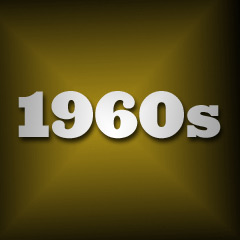
|
![]()
Greatest Films of the 1960s
1960 | 1961 | 1962 | 1963 | 1964 | 1965 | 1966 | 1967 | 1968 | 1969
Title Screen Film Genre(s), Title, Year, (Country), Length, Director, Description 





Alfie (1966, UK), 114 minutes, D: Lewis Gilbert



Andrei Rublev (1966, Soviet Union) (aka Andrei Rublyov, or The Passion According to Andrew), 205 minutes, D: Andrei Tarkovsky

Au Hasard Balthazar (1966, Fr./Swe.), 95 minutes, D: Robert Bresson



The Battle of Algiers (1966, Alg./It.) (aka La Battaglia Di Algeri), 117 minutes, D: Gillo Pontecorvo





Blow-Up (1966, UK),110 minutes, D: Michelangelo Antonioni
Italian director Michelangelo Antonioni's thought-provoking, art-house masterpiece presented a view of the world of mid-60s mod fashion, while also functioning as an engaging, provocative murder mystery that examined the existential nature of reality through photography. It was Antonioni's first film in English, and quickly became one of the most important films of its decade, and a milestone in liberalized attitudes toward film nudity and expressions of sexuality. [Note: The film in some respects resembled Hitchcock's Rear Window (1954), and proved influential for other young filmmakers: i.e., Coppola's The Conversation (1974), and De Palma's Blow Out (1981).] In the plot, a desensitized-to-life, nihilistic, hip, disinterested, swinging, and jaded high-fashion London free-lance photographer Thomas (David Hemmings), who lived a mid-60s life of excess (riches, fame, and women), became bored with his lucrative career of glamour photography. In the opening sequence, Thomas was engaged in a frenzied camera-shoot scene with various 'birds' - including skinny, writhing model Veruschka (Herself) during a solo shoot, urging her orgasmically as he straddled her on the floor with his phallic camera. In his off time, he resorted to photographing, in documentary style, the seamy and sordid side of life in London, in flophouses and slums. Innocently in the meantime, he took candid photos in a deserted East London park of a lover's tryst-rendezvous between a kerchief-wearing, enigmatic woman - the Girl (Vanessa Redgrave) and a middle-aged, gray-haired man in a light-gray suit. As he left the park, she pursued him, exhibiting distress, to ask for the roll of illicit photos, but he refused when she tried to grab his camera away: "What's the rush?" Afterwards, she ran off, and stood momentarily by a distant tree. Later, the Girl seductively asked and bargained for the incriminating film at Thomas' studio, and eventually offered sexual favors after going topless. Thomas gave her a roll of film, but kept the one she wanted. An exciting montage presented the stages of the pictures' development, through printing and magnified enlargement in the darkroom. A suspenseful, obsessive sequence showed the photographer processing and blowing up several pictures from his park visit, and magnifying them larger and larger to poster size. As tension heightened, he pinned the pictures on the wall of his living room - in sequence - giving them life as if they were individual frames in a motion picture. To his shock, Thomas believed he saw a shadowy figure and a hand holding a gun in the bushes behind a fence, and possibly a dead body. He imagined that he had witnessed a scene of sexual intrigue and the riveting possibility that he may have also accidentally obtained visual, criminal evidence of a murder. In between, Thomas experienced a controversial, sexual encounter with two naked, naive young wanna-be teenage models or "dolly birds" (blonde Jane Birkin and brunette Gillian Hills) in his studio (39), when they stopped by on their second visit. During Thomas' return nighttime visit to the park, the haunting sound of the wind blew through the trees - he discovered a scene of the murder and a man's prone corpse next to a tree. Upon his return to his photographic studio, Thomas shockingly realized that someone had stolen the majority of his negatives and prints of the incident - he returned to the park the next day to find the body missing. The film's enigmatic finale provided another indelible, symbolic image emphasizing the slim line between objective reality and illusion. A group of pantomiming students (or mimes) in white-face were playing a mute game of tennis with an invisible, non-existent tennis ball on a tennis court (the soundtrack picked up the sound of the tennis ball however) - Thomas joined in the game (and threw the imaginary ball back to them). The film ended with an aerial view of Thomas standing at a distance in the middle of a grassy field in the park near the tennis court, with his camera in his hand; he faded from view just before the words THE END zoomed forward.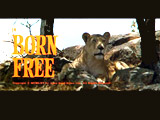

Born Free (1966, UK/US), 96 minutes, D: James Hill



Closely Watched Trains (1966, Czech) (aka Ostre Sledované Vlaky), 93 minutes, D: Jirí Menzel
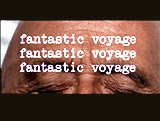


Fantastic Voyage (1966), 100 minutes, D: Richard Fleischer
Director Richard Fleischer's and 20th Century Fox's big-budget, escapist CinemaScopic classic science-fiction adventure film (the most expensive of its time) and Cold War thriller was one of the most influential sci-fi films of the 1960s, until Stanley Kubrick's 2001: A Space Odyssey (1968). Much of its $5.1 million budget was spent on post-production special effects, animation and the sets. Its tagline described its premise: "A Fantastic and Spectacular Voyage...Through the Human Body...Into the Brain." From its five Academy Award nominations (including Best Film Editing, Best Sound Effects, and Best Cinematography (for Ernest Laszlo)), it won two Oscars: Best Special Visual Effects (for its cutting-edge designs and special effects), and Best Art Direction-Set Decoration. The film's opening set in the year 1995 followed the defection of noted Communist Czech scientist Dr. Jan Benes (Jean Del Val) who arrived on a TWA jet in Los Angeles on a night-flight. A botched assassination attempt sent him with severe head injuries (and a blood clot in the brain) to a military hospital in a highly-secure underground military complex, known as the C.M.D.F. (Combined Miniature Deterrent Forces). He had been attacked by "the other side" (i.e., the Communists), but had not divulged any secrets before his life-threatening injuries - about how to prolong the process of miniaturization (a secret that would change the whole concept of warfare). In the main outline of the plot, a team of five specialists-experts (four males and a female) was chosen and recruited to engage in a mission to save the scientist's life. They consisted of hero-figure and secret agent Grant (Stephen Boyd), naval pilot and sub designer Capt. Bill Owens (William Redfield), nominal leader and twitchy medical consultant Dr. Michaels (Donald Pleasence), top neurosurgeon Dr. Duval (Arthur Kennedy), and Duval's long-time assistant Cora Peterson (Raquel Welch in an early role). It would be a microscopic mission (after they were reduced in size) in a shrunken, nuclear-powered submarine (the USS Proteus, Model U-91035) into inner space - into the body of the comatose patient. It was seen as an adventurous travelogue, journeying through the body via the arterial system to the man's brain to relieve a life-threatening blood clot by dissolving it with an experimental laser beam - within 60 minutes. It was planned that they would return by way of the venous system (seen in blue), reaching the base of the neck to be removed with a hypodermic needle. The team unexpectedly ran into oxygen supply problems, loss of power, turbulent environments in the lava lamp-like currents of blood vessels, and white-blood cell attacks, plus suspicions of a saboteur and a one-hour ticking clock before miniaturization reversed itself. As the "voyage' proceeded through the patient's body and its alien worlds, there were highly-detailed encounters with each of the main human organs or systems - the heart (circulatory system), the lungs (respiratory system), the lymphatic system (a protective system of fluids to protect against bacteria, including white blood cells), and the brain, plus interactions with the inner ear and several veins and arteries. The scenes requiring the most special effects included four set-pieces: the miniaturization of the crew and injection into the blood stream, their emergency route through the heart, the attack of the antibodies, and the final battle with white corpuscles. Through various techniques, the explorers at certain points were seen 'scuba-diving' (swimming) through the body (the actors were suspended on wires). In the final minutes of the hour-long miniaturization inside Dr. Benes' body, an on-board saboteur attempted to abort the mission by crashing the sub at full speed into the clot area of fragile brain cells (the central nerve) to kill the patient. He failed and was ingested, along with the sub, by a gigantic white corpuscle (macrophage). The four surviving crew hurriedly swam along the optic nerve and were able to emerge safely from the tear duct at the corner of the patient's right eye to be rescued moments before they reverted back to normal size.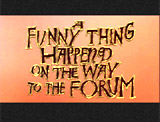



A Funny Thing Happened On The Way To The Forum (1966, US/UK), 99 minutes, D: Richard Lester




Georgy Girl (1966, UK), 100 minutes, D: Silvio Narizzano


The Good, the Bad, and the Ugly (1966, It./Sp.) (aka Il Buono, il Brutto, il Cattivo), 161 minutes, D: Sergio Leone
The third and final installment (but actual a prequel) in under-rated Italian director Sergio Leone's The Man with No Name epic trilogy, this is perhaps the best-known "spaghetti western" of all-time. 'The Man with No Name' was Eastwood's star-making role, after appearances in the previous A Fistful of Dollars (1964) and For a Few Dollars More (1965). Elements of his character can be found in his later anti-hero cop "Dirty" Harry Callahan character in Dirty Harry (1971). As with Leone's other westerns, this film is viciously violent and machismo in tone, but buoyed by the classic, instantly-recognizable, twanging Ennio Morricone score. In this sweeping, stylistic, and operatic film, The Man with No Name (but dubbed Blondie) (Clint Eastwood) is the unsmiling anti-hero "Good" guy, Angel Eyes Sentenza (Lee Van Cleef) serves as the vile and ruthless "Bad" guy, and Tuco Ramirez (Eli Wallach) provides the greedy, talkative, clownish and self-centered "Ugly". With very little dialogue, lots of closeups, and vast widescreen landscapes, the film's plot, set during the Civil War, concerns the acquisition of a treasure chest of $200,000 in stolen Confederate gold buried in a grave at a faraway location. All three of the main characters, basically amoral, anti-social bounty hunters, outlaws, and murderers, are forced to form an uneasy partnership or alliance, leading to the film's climactic graveyard shootout in which the opportunistic desperados find themselves facing off one last time for the fortune. [In 2003, a special restored and extended English language version, almost three hours in length with about 15 minutes of previously-cut scenes, was released that used the original Italian release cut, with Clint Eastwood and Eli Wallach dubbing in their voices to scenes that were cut from the USA release.]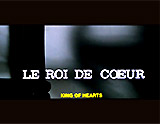




King of Hearts (1966, Fr./It.) (aka Le Roi de Coeur), 100 minutes, D: Philippe De Broca
Director Philippe De Broca's cult classic sleeper film told about the insanity of war. The satirical film was a quirky anti-war fable set at the end of WWI. In the film's basic over-stated plotline, a group of released inmates from an insane asylum were compared to the 'mad' and senseless pro-war policies of the sane world. Although a box-office bomb and disaster in its home country of France, it became a major cult film due to repeated revivals during 'midnight showings' in repertory and arthouse theaters in US college-towns in the 1970s. The story opened in the small Northern French village of Marville toward the end of WWI, as the German forces retreated after placing a booby-trapped bomb in the town square's clock tower set to detonate at midnight, to avoid leaving behind munitions for their enemies the British and French. Buffoonish British commander Colonel MacBibenbrook (Adolfo Celi) mistakenly recruited French-speaking Signal Corps Scottish soldier Private Charles Plumpick (Alan Bates) - an ornithologist (carrier pigeons were his specialty) and poetry-lover, to locate the German bomb and disable it. After arriving in the town, he was spotted by Germans and took refuge behind the locked iron gates of the local "ASILE D'ALIENES" (translated 'Insane Asylum'). Disguising himself as one of the patients, he gave himself the name "King of Hearts" and was able to fool the Germans. After their departure, he left the asylum but neglected to lock the asylum's gates, and the insane, eccentric and crackpot asylum inmates liberated themselves. They raided the abandoned shops and adopted festive costumes and makeup (e.g., a bishop's mitre hat and robes, etc.) and were freed to adopt fantasized (delusional and childlike) roles of the village townsfolk. Soon after, Plumpick realized that the inmates were inhabiting the town and attempted to save and warn them about the planted bomb by midnight. Meanwhile, the inmates recognized Plumpick as their leader - "The King of Hearts" - and set up an elaborate coronation ceremony for him in the town's cathedral. To save himself from the Germans, Plumpick went along with the masquerade, and later in the film, he was paired up with naively-innocent, young coquettish Coquelicot (aka Poppy) (French Canadian actress Genevieve Bujold) - a dancer and tightrope walker, to serve as his consort and Queen. As time ticked onward toward midnight, the time of the detonation, "King" Plumpick was unable to persuade the townsfolk to follow him and evacuate from the town to save themselves. Finally, at three minutes to midnight, Poppy provided a clue to the bomb's whereabouts with a hint about the password: "You'll see the knight come out...the knight comes out at midnight...up there! On the clock at midnight"; Plumpick raced to the clock tower and saved the town. The film concluded with massive carnage between the departing British troops and the German troops, leaving only Plumpick as the sole surviving soldier. Having seen enough violence and bloodshed, the inmates decided to abandon their "King" and return to the asylum (after shedding their costumes and props) at the outer gate. Plumpick was awarded a medal for bravery by liberating French troops, and reassigned to a new British squadron, but like the inmates, he decided to leave the real world and deserted his regiment. As he walked toward the asylum gates to enter, he discarded his rifle and stripped off his uniform; holding his birdcage (with his sole surviving carrier pigeon), he stood stark naked in front of the asylum's iron gates; he rang the bell (to alert two asylum nuns) who approached the gate and were totally startled; he was ready to rejoin and be committed with his asylum inmate friends in their world. Plumpick's romanticized view was that they seemed more sane than the real world of his own military regiment that was waging war.

A Man and a Woman (1966, Fr.) (aka Un Homme et une Femme), 102 minutes, D: Claude Lelouch
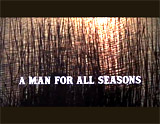



A Man for All Seasons (1966, UK), 120 minutes, D: Fred Zinnemann
The verbose, stagy, yet superb screen adaptation and Best Picture-winning historical period piece by Robert Bolt and Constance Willis was from Bolt's own 1960 stage play. The "man for all seasons" referred to the honorable Sir Thomas More (Paul Scofield reprising his 1960 London stage role that became an Oscar-winning performance). He was England's early-16th century great lawyer, judge, and a devout Catholic, who found himself in a clash of ideals with King Henry VIII (Robert Shaw, also Oscar-nominated). The film opened in the year 1528 to survey the last seven years of Sir Thomas More's life. As background, King Henry VIII was married to Catherine of Aragon (his own brother's widow), and had received a special dispensation from the Pope to marry her. When she proved infertile, the petulant king now demanded a divorce from Catherine to marry his mistress, Anne Boleyn (an unbilled Vanessa Redgrave). Henry was intent on having his wife bear a male heir to continue his dynastic reign, so he had set his sights on Anne Boleyn. Henry's Lord Chancellor Cardinal Wolsey (Orson Welles) was attempting to acquire a new dispensation from Pope Clement VII. In the morality play of the conflict between church and state, More's unflinching faithfulness to the Catholic Church (and his own conscience) forced him to refuse to acknowledge the determined Henry's demands for a divorce from Catherine. More as the new Lord Chancellor of England after the death of Cardinal Wolsey in 1529 refused to support the King's cause. Nonetheless, the King annuled his current marriage and wed Anne (who was then crowned as Queen in 1533). Determined to break from Rome, King Henry also renounced papal authority and declared himself the head of the Anglican Church, known as the Act of Supremacy in 1534. Although the Archbishop of Canterbury (Cyril Luckham) upheld Henry's marriage, More had refused on two counts. He vowed that he would not: (1) sign a letter asking Pope Clement VII to annul Henry's marriage to Catherine, and (2) take an Oath of Supremacy declaring Henry VIII Supreme Head of the Church of England. When the stubborn king broke with papal Rome, the steadfastly-principled, strictly-ethical, and pious More resigned his Chancellorship. The deceitful Thomas Cromwell (Leo McKern) in Parliament passed a law requiring all English subjects to take an Oath of Allegiance to accept Henry's will, but More refused to accept the heresy and publically endorse Henry (he kept a disapproving silence, and refused to accept the new Church). Although he remained silent (legally considered consent), More's quiet reaction was interpreted as disapproval. On trumped-up charges, More was imprisoned for a year in the Tower of London for not signing the Oath that was required of all subjects. Then during his treason trial, More defended himself in a Westminster court to a jury handpicked by Henry VIII, and was betrayed by the traitorous young scholar Master Richard Rich (John Hurt) with perjured testimony, while More was chided for his foolish rectitude. More was quickly found guilty in a sham trial. When he finally was able to defend himself, he made an impassioned speech that denounced the king. Afterwards, the dastardly Rich was rewarded with a position as Attorney General for Wales. In 1535, More forgave his executioner (Eric Mason) before he was beheaded - and became a revered martyr.

Persona (1966, Swe.), 85 minutes, D: Ingmar Bergman



The Professionals (1966), 117 minutes, D: Richard Brooks




Seconds (1966), 100 minutes, D: John Frankenheimer


War and Peace (1966, Soviet Union) (aka Voyna i Mir, or Война́ и мир), 401/414 minutes, D: Sergei Bondarchuk
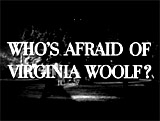


Who's Afraid of Virginia Woolf? (1966), 129 minutes, D: Mike Nichols
Nichol's debut film as director - of an adaptation of Edward Albee's scathing, dark, and vitriolic play - with a bold use of expletives. Real-life married couple Richard Burton and Elizabeth Taylor portray a dysfunctional couple's abusive, sado-masochistic, deteriorating marriage - as a weary, tortured, disillusioned academic professor George and his frumpy, alcoholic, foul-mouthed, seductive and abrasive wife Martha. The two invite a young teacher Nick (George Segal) and his mousy wife Honey (Sandy Dennis) to their home for a bitter and relentless evening of brutal, acerbic, verbal games that increase the hateful intensity of their mismatched, love-hate relationship.